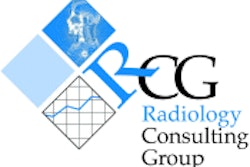
First Consulting Group

This unlikely scenario is fast becoming possible with the rise of enterprise digital imaging, a comprehensive information management approach that could someday transform the healthcare organization's employees from clerical support workers into healthcare analysts.
Clinicians, for example, will spend more time in an analytical mode where they are most effective and efficient -- instead of waiting for paper, film, or data. Business office staff will be able to strategize on ways to reduce accounts receivable days, minimize bad debt, and increase cash flow while lowering the payor’s costs for claims adjudication.
Enterprise digital imaging technology allows facilities the capability to have an enterprise-wide, fully open, and digital environment, improving patient care and operational efficiency. This enterprise approach is in the early-adoption stage of its lifecycle, providing possibilities that are no longer confined to the theoretical.
The market is demanding digital imaging systems for the healthcare enterprise (for example, radiology, cardiology, other specialties, business offices, medical records, and human resources) for many reasons, including:
- Elimination of islands of information
- High cost of independent digital imaging solutions
- Need for common information access methods
- Technical support needs for a common technology platform and infrastructure.
What is enterprise digital imaging?
Enterprise digital imaging is defined as a comprehensive solution for organizing, storing, and accessing information from many sources. From a practical standpoint, it is a method of providing clinicians with a single, patient-centered connection with the many imaging elements and workflows of medical and document imaging.
Enterprise digital imaging is designed with an enterprise view. The goal is to eliminate barriers between imaging services, physicians, and patient information, and make the flow of information more seamless.
In today’s healthcare market, imaging solutions generally consist of two models: clinical imaging (such as radiology, cardiology, and pathology) and document imaging (such as the business office, medical records, human resources, and digital photos). The resulting information gap means that clinicians are unable to access patient data and images, presented in a patient-centric view.
The future environment will make all imaging results -- both interpretation reports and actual images -- accessible to clinicians through a single workstation. This imaging environment enables the clinician to construct a patient-centered view of clinical information such as laboratory results and images of scanned paper documents such as consult reports, results from outside laboratories, and records from external healthcare delivery organizations.
The ultimate goal is to integrate the enterprise digital images into the customer’s computerized patient record (CPR) where a clinician can use a workstation to access a patient’s clinical information and images. This allows the clinician to make critical patient-care decisions in a timely fashion, and reduces the number of disparate systems within the organization. This type of solution can also assist in reducing clinical errors.
Industry standards enable change
Several industry standards are evolving that will help enable the tight integration of imaging solutions. Technology standards such as HL7, DICOM, TIFF, IEEE, and CCOW enable the integration of information systems, imaging systems, modalities, equipment, and network technologies.
Several industry groups are working to fill the gaps, including the Integrating the Healthcare Enterprise (IHE) initiative, sponsored by the RSNA and the Healthcare Information and Management Systems Society (HIMSS). Although the standards bodies are making great strides, there are major integration challenges that need to be addressed with an enterprise imaging solution. Some of these challenges include:
- Integration of information systems and the enterprise digital imaging solution. Departmental imaging solutions typically use separate scheduling, reporting, billing, and department-management systems. These systems need to be tightly integrated with the enterprise digital imaging system to realize operational efficiencies.
- Integration with other hospital systems or third-party payor systems. Business office imaging and information systems will need to link to external systems seamlessly and transparently to determine payment clarification, eligibility, and authorization. For most healthcare business offices, the task of interfacing with third-party systems -- even if it is done automatically -- involves some type of file transfer, which is a cumbersome process. All information should be available online. This integration will provide quicker cycle times on customer service and secondary billing processes.
- Integration of the clinical modalities with the digital imaging system. Clinical modalities (such as radiology, cardiology, and pathology) must be tightly integrated with the digital imaging system to ensure both image quality and operational efficiencies, such as modality worklist management.
- Integration of the clinical imaging solutions. Some enterprise clinical imaging solutions (such as radiology PACS and cardiology imaging) have different image-management databases and image archives for each department. Each vendor’s solution should be evaluated carefully to determine how the different images could be integrated into a common record, and, ultimately, the enterprise CPR.
- Addressing the different workstation requirements. Typically, cardiology and radiology have different image viewing requirements. These differing workstation requirements require careful design, implementation, and placement.
- Equipping the enterprise network to support both imaging components. Network transport requirements for clinical images must be assessed for the proper network bandwidth throughout the enterprise.
Vendors and the enterprise digital imaging market
Vendors are beginning to close the gap on enterprise digital imaging. In the clinical imaging market, there are a number of vendors working to marry radiology PACS and cardiology clinical imaging software to offer an integrated clinical imaging product.
Similarities are developing between medical imaging and the document imaging market, where several vendors currently offer multidepartmental imaging solutions. These document-imaging solutions support the many business needs such as accounts payable, accounts receivable, remittance processing and management, medical records, benefits tracking, and so on.
The document imaging vendors generally differentiate products via two market approaches. Many vendors offer pre-developed imaging applications that address a specific imaging need, but may not offer the most workflow flexibility. Other vendors offer a customizable workflow toolset to build the individual application and workflows to the support the business needs.
Although some imaging vendors are marketing an enterprise imaging offering, there is no one complete solution from a single vendor to address the clinical and document imaging needs in the healthcare market.
Therefore, integration and a common imaging architecture are critical to success in today’s market. Enterprise digital imaging system architectures are complex. They have to connect to products from multiple vendors for imaging modalities, information systems, storage devices, and workstations.
Several healthcare sites are currently serving as development shops for vendors to create and test integrated imaging solutions. Industry standards will continue to emerge and become more established with digital imaging solutions from various vendors. These standards will help vendors enable tighter integration of radiology, cardiology, and other specialties, as well as document imaging and the enterprise information systems.
Without a doubt, the enterprise digital imaging market is converging. It is incumbent upon healthcare executives to clearly understand the varying business, technical, and operational requirements of their environment.
For their part, healthcare organizations should clearly understand the various vendor capabilities and integration limitations before committing to a system. Ultimately, a common enterprise digital imaging strategy and architecture will be imperative for successfully addressing both organizational imaging needs and the forces of market convergence.
By Jay BackstromAuntMinnie.com contributing writer
October 23, 2001
Backstrom is digital imaging practice senior manager at First Consulting Group, a provider of consulting, integration, and information technology services to healthcare, pharmaceutical, and other life sciences organizations.
Copyright © 2001 First Consulting Group


















